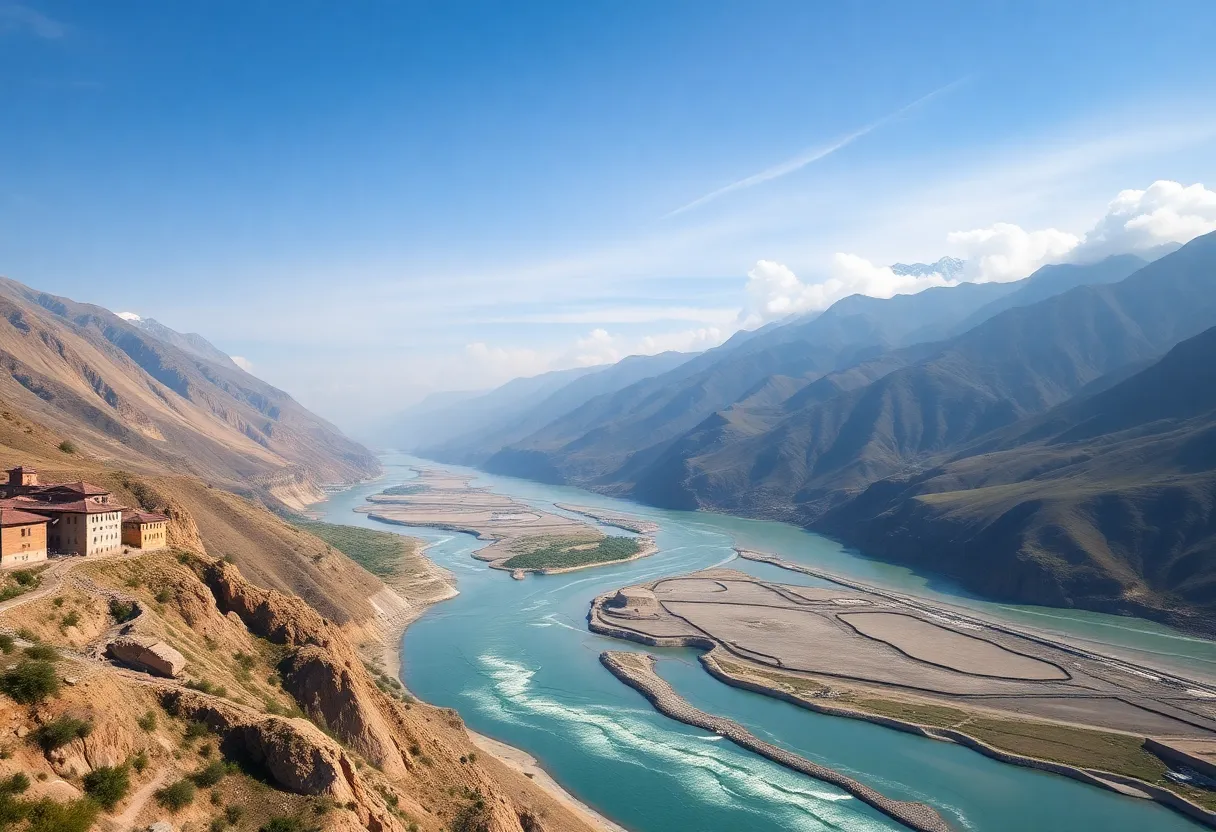News Summary
China has started the construction of a monumental dam along the Yarlung Zangbo River, aiming to create the largest hydroelectric power source globally. This project, with significant geopolitical implications, is expected to generate 300 billion kilowatt-hours of clean electricity annually, surpassing the Three Gorges Dam. While the development aims to enhance renewable energy capacity and stimulate economic growth in Tibet, environmental concerns and regional water security issues have been raised by neighboring countries, particularly India and Bangladesh.
Construction Begins on World’s Largest Hydropower Project in Lhasa, Tibet
Lhasa, Tibet – China has officially commenced construction of a massive dam along the Yarlung Zangbo River, also known globally as the Brahmaputra River in India and the Jamuna River in Bangladesh. This project is poised to become the largest hydroelectric power source in the world once completed, representing a significant milestone in China’s efforts to expand renewable energy capacity and meet environmental sustainability goals.
Details of the Megastructure and Project Scope
The undertaking involves building five hydropower stations along the upper reaches of the Yarlung Zangbo River, a river renowned for its formidable hydropower potential. The dam is situated just about 30 kilometers from China’s border with India, a region characterized by ongoing territorial disputes, heightening geopolitical significance. The project’s overall ambition is to generate up to 300 billion kilowatt-hours of electricity annually, making it potentially three times more productive than the well-known Three Gorges Dam on the Yangtze River.
The dam’s construction was marked by a formal ceremony attended by Premier Li Qiang, signaling the importance of the project at the national level. The construction approval was granted in December of the previous year, following several years of planning and development. The estimated total investment for this colossal infrastructure is around 1.2 trillion yuan, roughly equivalent to $167.1 billion.
Benefits, Objectives, and Power Generation
The primary aim of this project is to supply clean energy to multiple regions, including Tibet itself and other parts of China. The energy generated will support China’s broader strategy to reduce reliance on fossil fuels and accelerate its transition toward renewable sources of power. The project is also expected to stimulate economic growth within Tibet by creating jobs in construction, operation, and related industries.
While much of the electricity is intended for supply beyond Tibet, the local power needs will also benefit from the development. The dam’s significant hydro-potential is derived from the Tibetan Plateau’s unique geographical features, including a dramatic drop over the Yarlung Zangbo Falls, which provides a natural advantage for hydropower generation. The river reaches elevations of about 5,000 meters above sea level, making its hydrological features particularly advantageous.
Environmental and Geopolitical Concerns
The project has sparked ecological concerns among environmental organizations, citing potential irreversible impacts on the fragile Tibetan Plateau ecosystem. Critics warn that large-scale hydro-development may threaten biodiversity, water quality, and the stability of regional habitats. Additionally, downstream countries, notably India and Bangladesh, have expressed concerns about the dam’s potential impact on water flow and regional water security.
India, which shares the Brahmaputra River with China, raised concerns in January about how the dam might affect downstream communities. India has called on China to ensure that upstream activities do not harm its interests and has promised to monitor the situation closely. China’s foreign ministry has responded by asserting that the project will not adversely affect downstream nations and that China will maintain open communication with neighboring countries to address any concerns.
Historical Background and Regional Context
The Tibetan Plateau has long been a focus of hydroelectric projects, influenced by its critical role as a water source for over 1.3 billion people across ten countries. Since the Chinese annexation of Tibet in 1950, numerous dams and hydroelectric stations have been developed in the region, often raising ecological and social impacts. Historically, large dams like the Three Gorges have displaced millions, but recent projects have sought to minimize such impacts. Reports indicate that the 2015 Yagen Hydropower Station displaced approximately 2,000 residents, compared to the millions affected by earlier projects.
Environmental advocates caution that the new dam may cause significant environmental disruption, including changes in water flow patterns, sediment transport, and ecosystem health. The Tibetan Plateau’s unique geography, particularly the significant drop over the Yarlung Zangbo Falls—around 6,561 feet over a short distance—contributes immensely to its hydropower potential but also underscores the ecological sensitivity of the area.
Conclusion
The construction of this mega-dam marks a crucial development in China’s renewable energy expansion and regional infrastructure development. It exemplifies China’s strategic focus on leveraging natural geological advantages while also prompting international dialogue about environmental preservation and regional water security. As work progresses, close monitoring and international cooperation will be essential to balancing economic benefits with ecological sustainability and geopolitical stability.
Deeper Dive: News & Info About This Topic
HERE Resources
Additional Resources
- Al Jazeera
- Wikipedia: Yarlung Zangbo River
- NBC News
- Google Search: China hydropower dam Tibet
- Bloomberg
- Google Scholar: China hydropower dam Tibet
- Reuters
- Encyclopedia Britannica: Hydropower
Author: STAFF HERE VIRGINIA BEACH WRITER
The VIRGINIA BEACH STAFF WRITER represents the seasoned team at HEREVirginiaBeach.com, your trusted source for actionable local news and information in Virginia Beach, Virginia Beach City, and beyond, delivering "news you can use" with comprehensive coverage of product reviews for personal and business needs, local business directories, politics, real estate trends, neighborhood insights, and state news impacting the region—supported by years of expert reporting and strong community input, including local press releases and business updates, while offering top reporting on high-profile events like the Virginia Beach Neptune Festival, East Coast Surfing Championship, and military homecoming celebrations, alongside key organizations such as the Virginia Aquarium, Virginia Beach Convention Center, and Oceana Naval Air Station, plus leading businesses in tourism and defense like Busch Gardens and Northrop Grumman, and as part of the broader HERE network including HEREWilliamsburg.com, providing credible, in-depth insights into Virginia's vibrant landscape. HERE Virginia Beach HERE Williamsburg





